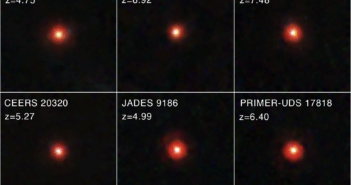
Features
All Alone With No AGN to Call Home? New Results for Little Red Dots
Small in size and glowing red, little red dots have been confusing astronomers since their discovery by JWST. What are the origins of these distant galaxies, and what have researchers learned so far?

Astrobites
What’s Going On Inside GJ 486b?
Astrobites reports on a warm, rocky exoplanet and what might be hidden beneath its atmosphere.






